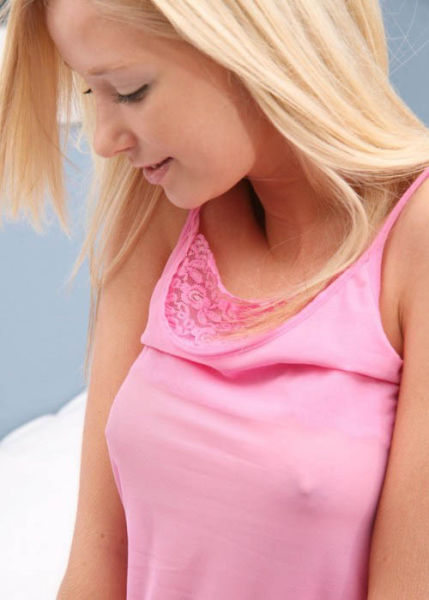|
|
Young Teen College Girl Without Brassiere
|
In 2006, Target stores began stocking a range of bras for three- to four-year-olds, Bratz bras for three- to four-year-olds, Saddle Club bras for four- to six-year-olds, and a lightly padded Target brand bra for eight- to 10-year-olds. Australian retailer Big W's added a Just Girls padded bra for eight- to 10-year-olds and a My Little Pony bandeau bra for two- to three-year-olds, and Bonds is now marketing My First T-Shirt Bra, for ages eight and up. In 2010, Primark stores withdrew a bikini featuring a padded bikini top targeted at seven-year-olds after protests by local consumers who described the marketing program as "premature sexualisation".
• Bra shape
The culturally desirable figure for woman in Western culture has changed over time. In the United States during the 1920s, the fashion for breasts was to flatten them as typified by the Flapper era. During the 1940s and 1950s, the sweater girl became fashionable, supported by a bullet bra (known also as a torpedo or cone bra) like that worn by Jane Russell.
During the 1960s, bra designers and manufacturers began introducing padded bras and bras with underwire. Women's perception of undergarments changed, and in the 1970s, they began to seek more comfortable and natural looking bras. In response to the feminist era, many bra manufacturers' marketing claimed that wearing their bra was like "not wearing a bra". Women usually purchase a bra because they recognize they need to replace an existing bra or because they purchased new outwear requiring a new type of bra. Although in popular culture the invention of the bra is frequently attributed to men, in fact women have played a large part in bra design and manufacture, accounting for half of the patents filed.
|
|









